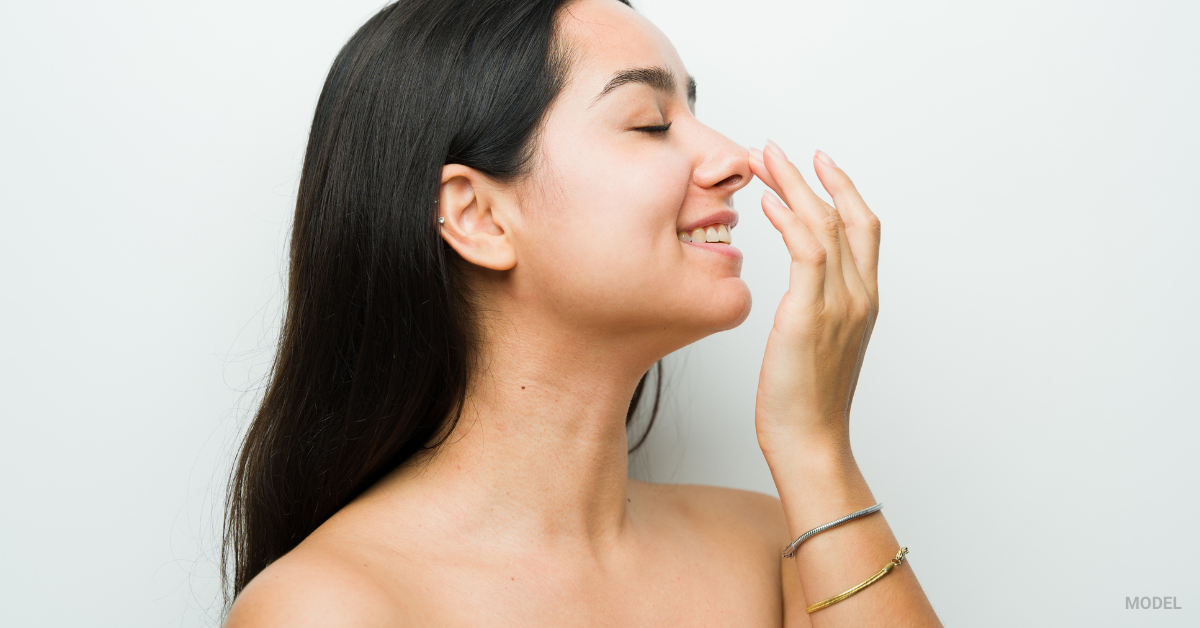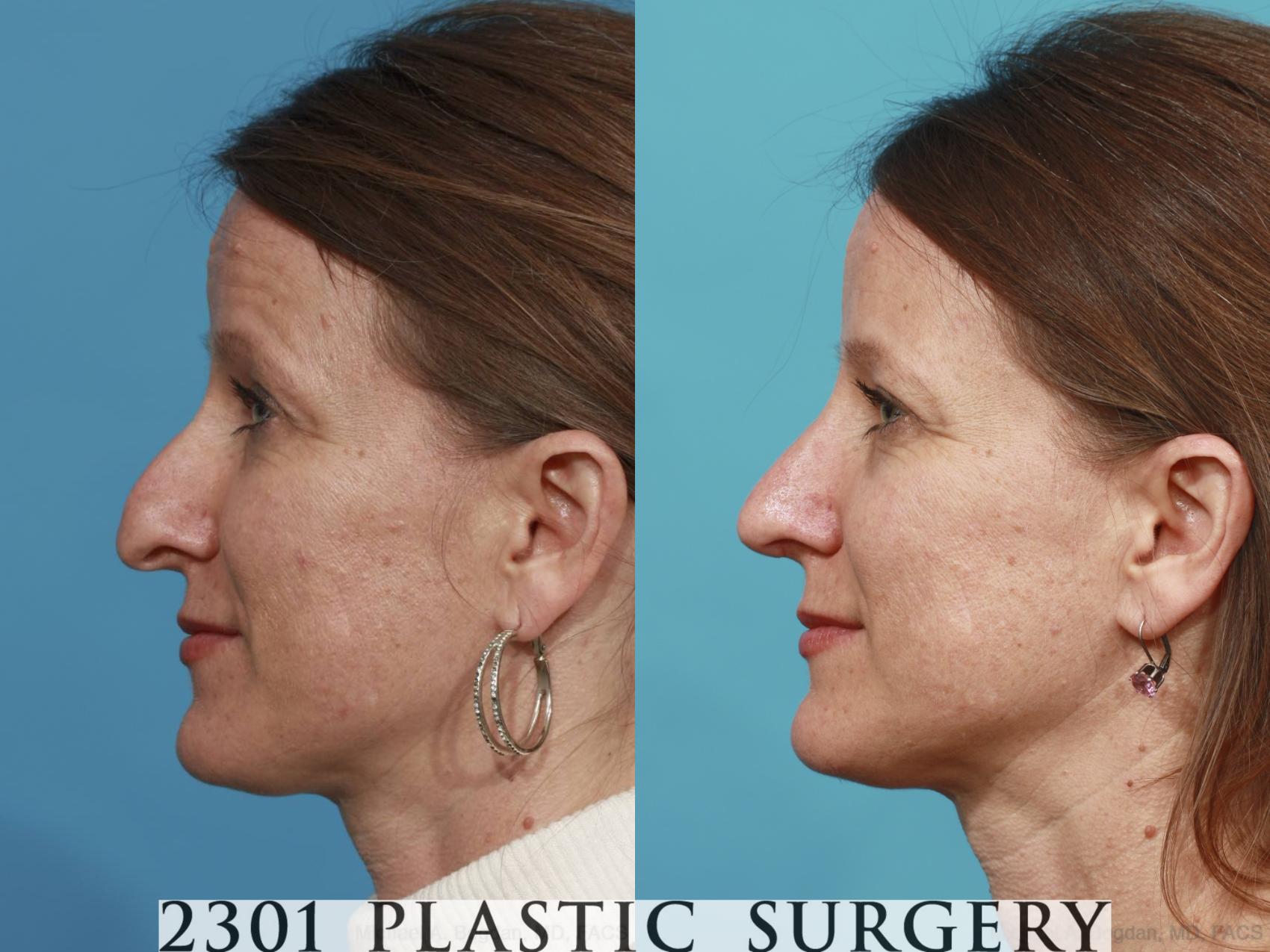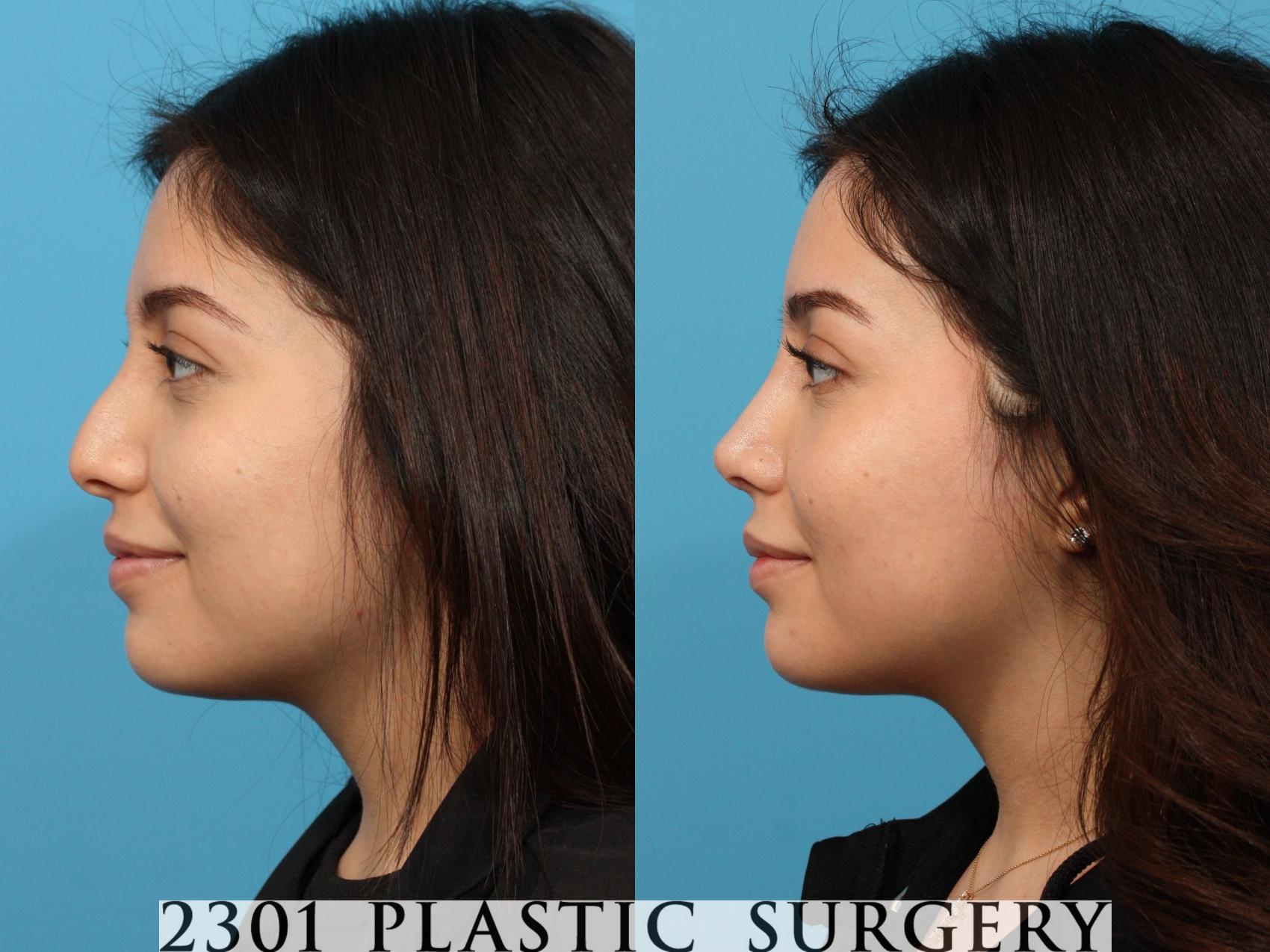Rhinoplasty, commonly known as a nose job, is a transformative procedure that enhances your nose’s appearance, and often its function. However, like any surgical procedure, rhinoplasty surgery has a recovery period, complete with discomfort, bruising, and swelling. While you may be excited to remove your splint and show off your “new nose” after surgery, don’t be discouraged by your early results—patience is critical to your rhinoplasty recovery, especially when it comes to swelling.
This post offers a timeline of rhinoplasty swelling stages. Keep scrolling to prepare yourself for what to expect as you await the final results of your nose surgery.
Timeline: Rhinoplasty Swelling & Stages of Healing
Swelling after rhinoplasty is a natural part of the healing process. It’s your body’s way of protecting and healing the surgical site. However, the extent and duration of swelling varies from patient to patient. Here’s a general timeline of what you can expect:
Immediately after rhinoplasty:
Swelling and bruising in the cheek and eye regions are likely within the first 24 hours. During this initial recovery window, it’s essential to keep your head elevated and gently apply cool compresses.
1 week rhinoplasty bruising & swelling stages:
Swelling usually peaks during the first week post-surgery. Don’t be concerned—many patients experience the following symptoms before swelling gradually subsides:
- A congested, stuffy nose
- A puffy appearance caused by swelling around the cheeks and under the eyes
- Bruising or black eyes
After about 7 to 10 days, most patients feel comfortable returning to school or work. Remember, healing is a gradual process, and patience is vital.
1 month post-rhinoplasty swelling status:
By the one-month mark, you’ll notice a significant reduction in swelling. Most puffiness subsides, and you’ll start to see the shape of your enhanced nose emerging. You’ll likely experience these residual side effects 1-month post-op:
- Your nose may feel somewhat stiff
- The nasal tip might be slightly swollen and upturned
- You may have numbness or tenderness in your nose
- There may be minor asymmetry or irregularities
- You may have slight difficulty breathing through the nose as swelling continues to subside
Many people ask how swelling from rhinoplasty at 1 month is vs. 1 year. While most people feel comfortable debuting their new look in social situations, subtle changes are still occurring as your nose fully heals.
2 to 6 months after rhinoplasty:
During this period, swelling continues to subside. Here’s what to watch out for:
- You’ll notice your nose becoming more refined and settling into its new shape
- You may experience subtle temporary numbness or tingling on the side of the nose, part of the tip, and possibly the upper lip
- The tip of your nose begins to drop into its final position (the nasal tip typically takes the longest to heal due to its thick consistency)
At this point, most people are enjoying the results of their rhinoplasty, as any residual swelling is minor.
1 year rhinoplasty swelling stages:
Upon reaching the one-year mark, swelling is usually fully resolved, and you can confidently show off your final results!
- Your nose has settled into its new shape
- Your facial features appear balanced and harmonious
While everyone’s experience varies, recovery from closed rhinoplasty vs. open rhinoplasty is typically quicker. If you choose to combine your rhinoplasty with a complementary facial plastic surgery procedure such as a chin or cheek implant, or otoplasty (ear surgery), you may have a longer recovery.
Tips To Reduce Swelling After Rhinoplasty
While swelling is an inevitable part of the healing process, there are several steps you can apply to help minimize it:
- Keep your head elevated: For a few weeks, keep your head elevated, even while sleeping. Reducing blood flow to the nose minimizes swelling.
- Apply cold compresses: Gently applying cold compresses reduces swelling and enhances comfort—just be careful not to apply pressure directly to your nose.
- Avoid salty foods: A low-sodium diet reduces fluid retention to alleviate swelling.
- Stay hydrated: Drinking plenty of water removes toxins and aids healing.
- Avoid strenuous activities: For the first few weeks, avoid activities that increase blood flow to your face, such as bending over, heavy lifting, or vigorous exercise.
- Follow your surgeon’s instructions: We’ll provide detailed post-operative instructions designed to enhance your healing and results.
- Be patient: Remember, healing takes time. Resist the urge to compare your progress to others, as everyone’s healing journey is unique.
If you cannot set aside downtime for rhinoplasty healing, consider a liquid rhinoplasty using fillers. Keep in mind, however, that the results are temporary and less dramatic than a surgical rhinoplasty.
Choosing an Experienced Rhinoplasty Surgeon
Rhinoplasty is one of the most complex cosmetic surgeries, requiring a deep understanding of the nose’s aesthetics and function. Dr. Roger Cason and I specialize in advanced rhinoplasty techniques that produce balanced, natural-looking results.
When choosing a top rhinoplasty surgeon, consider the following:
- Specialization in facial plastic surgery
- Specific experience with rhinoplasty procedures
- Robust rhinoplasty before and after photo gallery featuring real patient results
- Positive patient reviews and testimonials
- The surgeon’s bedside manner, approach to patient care, and follow-up
By selecting a credentialed and experienced rhinoplasty surgeon, you’re investing in better results and a smoother recovery process. A skilled surgeon employs techniques that minimize trauma to the surrounding facial tissues, potentially reducing post-operative swelling and accelerating recovery while delivering optimal results.
Put Your Best Face Forward
Rhinoplasty can be a life-changing procedure, but it’s important to approach it with realistic expectations. Understanding the stages of rhinoplasty swelling can help you navigate your recovery with confidence. Remember, we’re committed to helping you through the process from your first consult until you’re ready to show off your refined new profile.
To get started, request a consultation using the online form, or call our practice at (817) 442-1236 to schedule your appointment.








